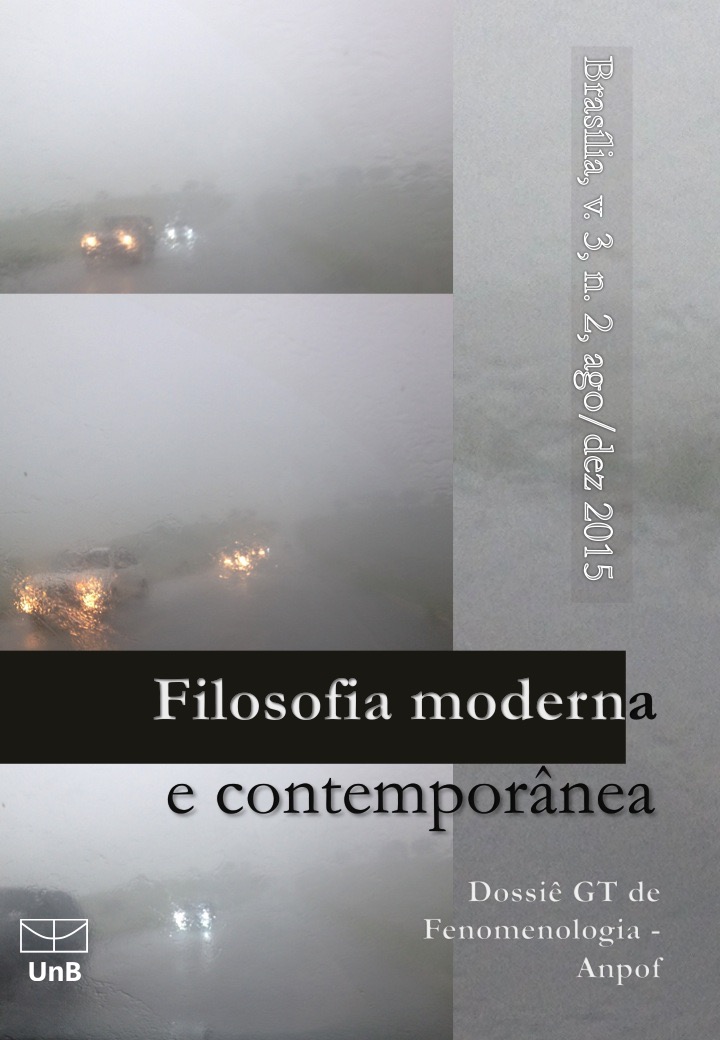Merleau-Ponty and Marion: the problem of an ambiguity between a phenomenology of perception and a phenomenology of donation
DOI:
https://doi.org/10.26512/rfmc.v3i2.12514Keywords:
Ambiguity, Reduction, Awareness, Donation, PhenomenologyAbstract
As reflexões que encontramos na Fenomenologia da Percepção, de Merleau-Ponty e em Étant Donné, de Jean-Luc Marion estão ancoradas, como manda a tradição fenomenológica, na redução. Para Merleau-Ponty, a redução fenomenológica se abre primordialmente para uma reflexão do irrefletido, da experiência perceptiva, a correlação mais original e espontânea entre os eventos mundanos e a atividade pré-pessoal do corpo próprio. Todavia, Merleau-Ponty, nos trabalhos dos anos 50 e, ainda no Visível e o Invisível, Merleau-Ponty julgará essa tentativa como uma má-ambiguidade, pois a percepção foi elevada a condição de um pensamento. Radicalizando a redução husserliana, a via de Marion ”“ “A tanta redução, a tanta doação ””“ abre-se para uma profunda discussão sobre a homologia fenomênica entre redução, doação e aparecimento. No ato de doação, o que se dá não é um fenômeno como evidência objetal, não é ente para o dasein ou, ainda, um fenômeno como síntese da nossa experiência pré-reflexiva, mas é dado como puro dom. A ambiguidade, portanto, constitutiva da doação, é uma espécie de acontecimento contíguo que radicalizaria todas as formas de redução fenomênica e não fenomênica ao colocar em cena um aparecer que se dá sem a proeminência de um objeto, de um sujeito ou, ainda, de qualquer forma de síntese intelectiva ou perceptiva. Em uma fenomenologia da doação, portanto, escaparíamos ao problema da má-ambiguidade, sempre presente em uma fenomenologia da percepção. Como? Eis o que eu busco entender.
Downloads
References
DESCARTES, René. Discurso do Método; As paixões da alma; Meditações Metafísicas; Objeções e Respostas. 5 ed. In: Os Pensadores. São Paulo: Nova Cultural, 1991.
MARION, Jean-Luc. Étant donné. Essai dune phénoménologie de la donation. Paris: PUF, Épiméthée, 2005.
__________. O Visível Revelado. (Tradução: Joaquim Pereira)São Paulo: Estação Loyola, 2010.
_________. L’idole et la distance. Paris: Grasset, 1977.
_________ .Dieu sans l’être. Paris: PUF, 1991.
_________.La croisée du visible. Paris: PUF, 1991.
MERLEAU-PONTY. Oeuvres. Éditions.Gallimard, Paris, 2010.
______. Elogio da Filosofia. Lisboa: Guimarães editora. 1986.
_______. Parcours Deux (1951-1961). Paris: Éditions Verdier, 2000.
_______. O Olho e o Espírito. São Paulo: Cosac & Naify, 2004.
______.Estrutura do Comportamento. São Paulo: Martins Fontes, 2006.
_______. Fenomenologia da Percepção. São Paulo: Martins Fontes, 1999.
________. O Visível e o Invisível. São Paulo: Perspectiva, 1999.
ROOS, David. Aristóteles. Lisboa: Dom Quixote, 1978.
SLATMAN, Jenny. Merleau-Ponty and the possibilities of philosophy: transforming the tradition. Edited by Robert Vallier, Wayne Froman, and Bernard Flynn. Published by State University of New York Press, Albany, 2009.
Downloads
Published
Issue
Section
License
Copyright for articles published in this journal is retained by the authors, with first publication rights granted to the journal. By virtue of their appearance in this open access journal, articles are free to use, with proper attribution, in educational and other non-commercial settings.


